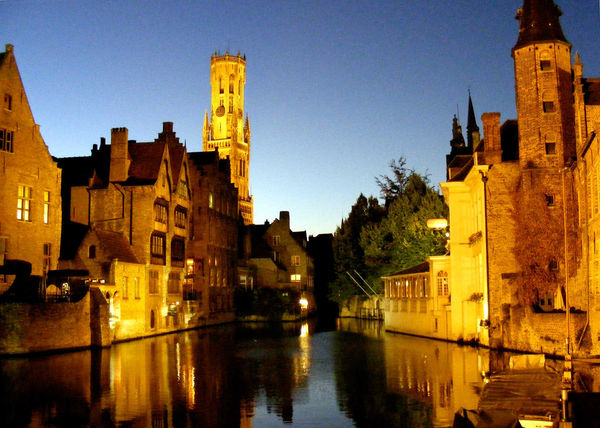Bruges: Pickled in Gothic
By Rick StevesThe medieval Belgian town of Bruges attracts hordes of visitors, but don't let that keep you away. Get lost on its back streets, away from the lace shops and waffle stands, and ride a bike along a quiet canal, sip beer in a tiny pub, or find a secluded bench to nibble fine local chocolate. Afterall, despite Bruges' several worthwhile museums and churches, the ultimate sight here is the quaint town itself.
The Flemish who live in this part of Belgium call this city "Brugge" (BROO-ghah), but the French half of the country (and English speakers) call it "Bruges" (broozh). Either way, the name comes from the Viking word for "wharf" — and Bruges did indeed begin life as a trading center.
By the 1300s, the city had a population of 35,000 and the most important textile market in northern Europe. A century later, it was northern Europe's richest, most cosmopolitan, and most cultured city. Bruges' canals provided merchants smooth transportation, while new ideas, fads, and artistic techniques were imported and exported with each shipload.
But silt soon began to clog the harbor, and most trade eventually moved to the port at Antwerp. By the 16th century, Bruges' Golden Age was over.
Like so many of Europe's small-town wonders, Bruges is now well-pickled because its economy went sour so quickly. Rediscovered by modern-day tourists, Bruges thrives again. Bruges' market square, ringed by great old gabled buildings and crowned by a leaning belfry, is the colorful heart of the city — just as it was in Bruges' medieval heyday.
This bell tower has dominated the square since 1300. It's worth climbing the 366 steps to survey the town — plus, just before the top, you can peek into the carillon room. I always aim to be there on the quarter hour, when the 47 bells are played mechanically with a huge, tabbed barrel that looks like something from a giant's music box.
Within three blocks of the tower you'll find a day's worth of sightseeing. The Basilica of the Holy Blood is famous for its relic of the blood of Christ, which, according to tradition, was brought to Bruges in 1150 after the Second Crusade. Next door, the City Hall has the oldest and most sumptuous Gothic hall in the Low Countries.
The Gruuthuse Museum, the former home of a wealthy brewer, is filled with everything from medieval bedpans to a guillotine. And the Church of Our Lady, standing as a memorial to the power and wealth of Bruges in its heyday, has a delicate Madonna and Child by Michelangelo — said to be the only statue of his to leave Italy in his lifetime (yet another Bruges extravagance made possible by the cloth trade).
But the main place for art here is the Groeninge Museum, which recalls the era when internationally known artists set up studios in Bruges, producing portraits and altarpieces for wealthy merchants from all over Europe. The museum has one of the world's best collections of Flemish paintings. And while early Flemish art is less appreciated and understood today than the Italian art of the same era, the Groeninge makes it easy to appreciate this subtle, technically advanced, and beautiful style. You'll gaze at 15th-century canals and at town squares littered with people in leotards and lace. Many paintings show slice-of-life street scenes that make clear how much Bruges still looks as it did way back when.
Bruges isn't just a feast for the eyes — this is Belgium, after all. The town is filled with restaurants serving up some of the world's best mussels, frites, and waffles. Every local has a favorite chocolatier (my top pick is Dumon), and most shops are generous with their samples. Beer buffs will want to make time for a tour of De Halve Maan, Bruges' only working family brewery — or just stop by the beloved 't Brugs Beertje, a convivial pub that happily serves up more than 300 Belgian brews.
At the end of the day, I like to head back to the market for a live carillon concert (held several times a week in summer) — consistently one of the best I've found in Europe. Though you can hear the tunes ringing out from the tower's bells anywhere in the cobblestoned old town, I like to listen from one of the benches in the courtyard just below the carillon.
One evening, while I was waiting for the music to begin, I happened to look up just as the carillonneur popped his head out a window and waved to the crowd, like a kid checking in with a parent before diving into a pool. Then he disappeared and began hammering — literally hammering. (A carillon keyboard looks like the foot pedals of a big organ, but it is played with bare, clenched fists.)
After the concert, I waited to personally thank the carillonneur. When I shook his hand, I found myself gripping a freakishly wide little finger. A lifetime of pounding the carillon had left him with a callus that had more than doubled the width of his pinky. He's just one more artist perfecting his craft in the timeless city of Bruges.


